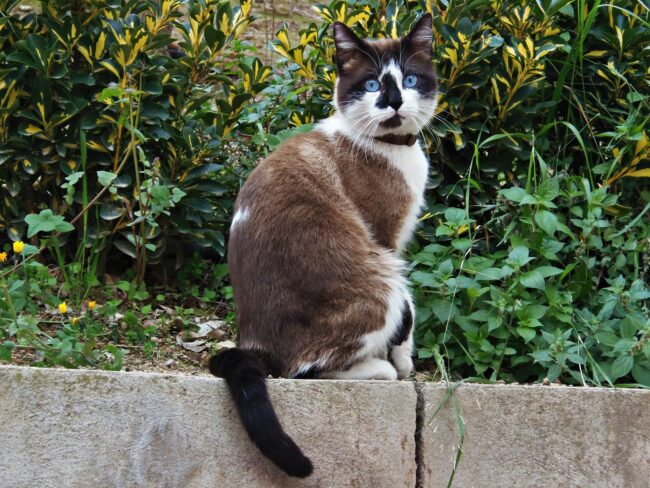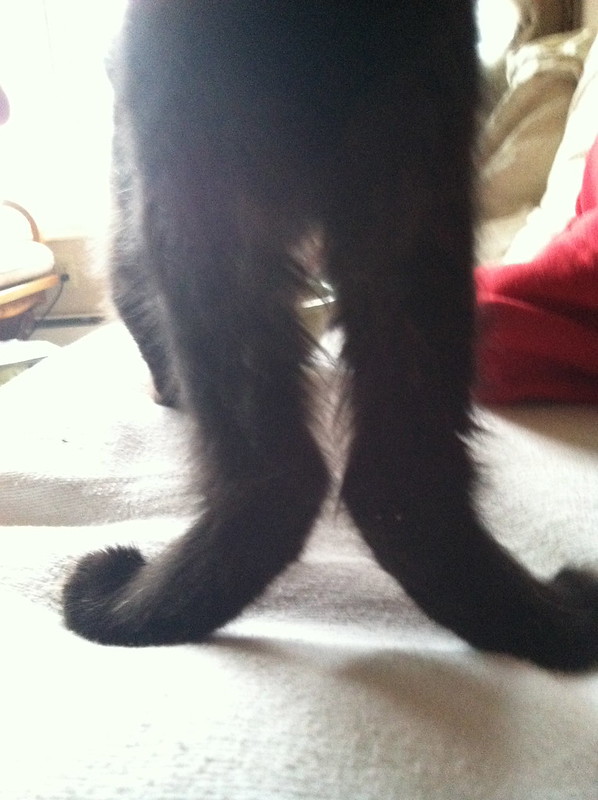Table of Contents
As a pet owner, one of your biggest responsibilities is to keep a regular check on the behavior and symptoms of your pooch to notice any abnormalities or concerns. This becomes more important when you own a cat because they are experts at hiding their signs of pain and discomfort until the problem gets too serious, sometimes causing irreversible damage.
One of cat owners’ most commonly reported observations or problems is cow hocks. This condition is an example of a structural abnormality that can result in further complications if not addressed on time. In this guide, we discuss more about cow-hocked cats and try to understand whether this condition can be corrected.
Cow Hocked Cat – A Complete Guide
A cow hocked cat is when it has an inward pointing hock that results in a splayed appearance in the rear legs. Cow hocks is a common conformation defect in four-legged animals, generally seen in horses and cattle but also noticed in cats and dogs. A cow hocked cat has its hind legs turning inward, which further results in the feet pointing outward instead of forward.
A cow-hocked cat may not show any abnormality in the initial stages of the problem. It is normal for kittens to appear a little cow-hocked, and mild cow-hocking may also not be a major issue. However, if the defect gets severe, it can cause a lot of pain, discomfort and complications in the long run. If you have a cow-hocked cat, it is possible that the condition exists right from its birth and has gradually got worse. A physical examination of the legs of the cat at the hospital easily tells you whether the pet is affected by this condition.
Do Your Cats Feet Point Outward?
Sometimes, as you look at your feline friend, you may notice some irregularity in its limb structure and shape. A limb deformity, either developmental or congenital, results in an irregularly shaped foot. There are several reasons you can see the cat’s feet pointing outward. A vet can easily tell the problem with the help of a physical examination.
Cow-hocked leg is a problem affecting cats, causing the feet to point outwards rather than forward as they should be. In this case, the cat’s hind legs turn inward, resulting in the feet turning outward. At times, this confirmation issue is painless and needs no attention. However, at other times, it could cause severe pain and discomfort or result in further health issues. It is, therefore, advisable to consult your vet when you see any such abnormalities in your cat’s structure or appearance.
Cow Hocked Cat Problems
Cow hock is a common problem in cats of all ages and can be either from birth or developmental. Most often, mild deformation in the legs is not a problem. However, if the condition gets worse, the hind legs turning inwards can put a lot of pressure on the hips and spine, eventually leading to additional problems and health deterioration.
Having cow hocks places additional stress on the cat’s hips and spine to cause it to suffer from chronic pain and conditions like arthritis. The greater the extent of this condition, the higher the chances of spinal issues the cat is likely to suffer from. As cats hide their pain and discomfort, the problems go unnoticed until the damage to the spine or hips is irreversible and can only be managed and not cured. The vet can manage any painful condition resulting from cow-hocked legs with medications and treatment, depending on its severity.
Whenever you notice any changes in the cat’s limbs or feet or see any abnormal behavior, you should report it to your vet earliest to avoid further complications. When noticed in its early stages, conditions resulting from cow-hocked legs can be treated to save the cat from chronic pain and other health issues resulting from the problem.
Cow Hocked Cat Pictures
Can Cow Hocks Be Corrected?
Generally associated with genes, cow hocks cannot be corrected though its implications can be managed to save the cat from discomfort and damage. If a cat has cow hocks from birth, it can be treated to improve the condition so that it does not suffer from any serious condition occurring from the wear of the hocks. As cats are likely to inherit this abnormality from their parents, a solution is to avoid using cow-hocked cats for breeding, reducing the risk of kittens taking birth with this abnormality.
While cow hocks cannot be completely corrected, treatments are available to strengthen the hinds of the cat to mask the appearance and compensate for the wearing associated with the condition. The treatment includes some hind strengthening exercises that increase the leg’s muscle power to reduce the cow hocks’ outward appearance.
You must keep a close eye on a cow-hocked cat to notice any signs of a serious problem so that it can be taken to the vet on time. If you see your cat in pain, it is important to get it checked for any spinal or hip issues. Some cats with this problem are affected by a chronic condition called arthritis. Your vet can treat the cat with arthritis to make its life comfortable because there is no cure for this condition occurring from cow hocks.


